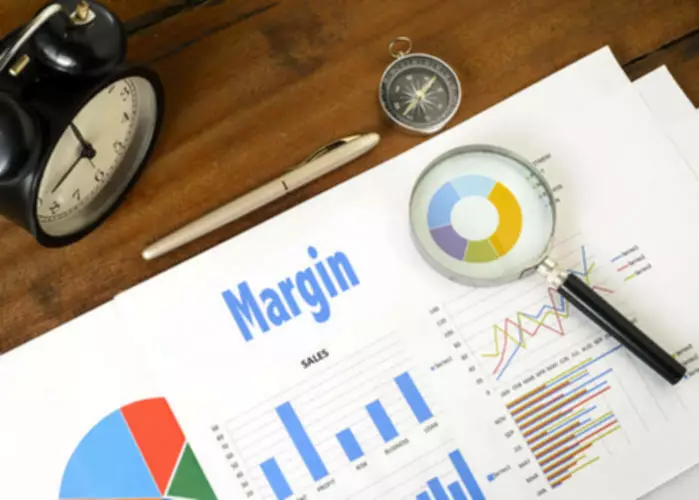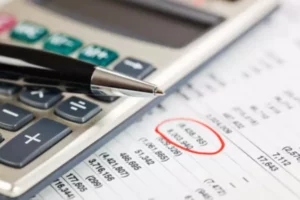Content

Most importantly, you bridge the gap of your personal and professional life, making it hard to unravel the two. This is an interesting one, as it not only helps you raise funds but also validates the idea with potential future customers. Under this option, you pitch your future or current business plans on an open platform, where individuals, lenders, investors, and anyone can have access. Certain platforms are restricted to accredited investors (high net worth, high earning investors), but most are open to the regular average individual.
Your financial forecast gives you a rough estimate of how much revenue you’ll generate in the future. Your financial forecast uses your total revenue, gross profit, and operating profit percentage to show you how much you’re spending on controllable expenses and non-controllable expenses – and the profit leftover. You and your accountant will work on certain bookkeeping and accounting tasks together. You’ll also want to know enough about accounting to monitor financial KPIs that will help you make business decisions on the fly. Restaurant accountants understand how to compile data accurately and meaningfully. They are trained to analyze your financials to identify operational shortcomings, cost leaks, and trends that require immediate or long-term action.
Common Restaurant Accounting Challenges
Today, ERP systems are critical for managing thousands of businesses of all sizes and in all industries. To these companies, ERP is as indispensable as the electricity that keeps the lights on. If you want to save money (and let’s be real—you do), accurately managing your inventory https://www.bookstime.com/articles/restaurant-bookkeeping is going to get you where you need to be financially. Let’s get into a detailed breakdown of restaurant costs so you can see exactly where your money is going (and why). With accounting, you typically get what you pay for unless the accountant is simply not a good fit.

Measure ingredients carefully, and ensure that all employees do the same. If a recipe calls for one-quarter cup of cheese, but a half-cup is consistently used instead, that would double your cost for cheese. You might think accounting is the same across the board, but it can differ quite a bit from industry to industry.
Cash method
No matter what kind of restaurant you are, food and labor will make up the highest percentage of your costs. The most basic thing any manager or owner needs to understand is cash flow. Ever heard the saying, “cash flow is king?” There’s a reason that saying exists—managing your cash flow is essential for running a successful enterprise. First, size matters, so do not let a big firm do a small firm’s job. For example, if you are a single-unit restaurant grossing $1m in revenue per year then you probably should not engage a big-four accounting firm to do your accounting and taxes.
Restaurant365 Hits $1B Valuation; $135M Raised – Orange County Business Journal
Restaurant365 Hits $1B Valuation; $135M Raised.
Posted: Tue, 30 May 2023 20:25:54 GMT [source]
You need a parent account for both Costs of Goods sold as well as Payroll costs. Then you want subaccounts under each of those with the level of detail you desire. The next step of an effective restaurant bookkeeping process should be to set up accounts payable correctly. Keeping your vendors happy will be important if you want them to continue to do business with you. And since labor costs are one of the largest expenses for a restaurant, it’s important to know what it is so you can invest money wisely and increase profits. And payroll taxes and employee benefits are included in labor costs.
The Basics of Bar & Restaurant Accounting
ERP Systems and software support multiple functions across the enterprise, mid-sized, or small businesses, including customizations for your industry. How can these solutions manage organizations day-to-day business activities, such as accounting, finance, procurement, project management, supply chain, and manufacturing. ERP systems tie together a multitude of business processes and enable the flow of data between them.
- It’s a relatively easy method of accounting because you don’t have to keep track of accounts that owe money.
- Learning how to manage restaurant accounts is all about becoming familiar with two accounting methods.
- Cash flow reports should also be more frequent for the same reason.
- The repayment term is the total time you have in which you need to pay back the borrowed money.
- Luke O’Neill writes for growing businesses in fintech, legal SaaS, and education.
The accrual method records transactions as soon as they happen, whether or not there’s a payment. The primary difference between the two methods is when to record revenue and expenses. Restaurants have expenses and transactions that are unique to them. And that necessarily makes restaurant accounting unique among the types of accounting. Organizations have always https://www.bookstime.com/articles/construction-in-progress-accounting struggled to balance traditional ERP’s high costs and complexity against the need for customized features and flexibility, all while meeting the demands of the business. Watch and learn how Oracle ERP Cloud delivers connected teams, unified data, and real-time insights to help you and your finance team ensure that the best business decisions are made.
Eliminate cumbersome intercompany transactions
As the key to long term business success is simply staying in business. The traditional option for restaurant financing is one that you are likely already familiar with. It is often talked about or mentioned when launching a business, the concept of going to the bank to get a loan to start your new business venture, or leverage up an existing business.
You can calculate COGS the hard way… how many you sold of a menu item X how much it cost to make it. Without it, getting insights into anything related to your restaurant’s moneymaking & spending will be a headache… and getting your taxes done will be especially difficult. The Chart of Accounts is the source of a business’s financial statements. Then all of these are broken down into subcategories… things like marketing, restaurant supplies, and sales are all items you would typically find in a restaurant Chart of Accounts. The Chart of Accounts includes assets, liabilities, revenue, expenses, and equity. Chart of Accounts is the term your accountant uses to describe the buckets used to categorize the money that flows in and out of your business.
Ready to give our services a try?
Next-generation technologies, like artificial intelligence (AI), help cloud-based systems rapidly improve their capabilities with no need for periodic updates, unlike your legacy system. Now, with no additional or new input from the end-user, ERP systems continually become significantly easier to manage and use. Replace spreadsheets with a flexible platform that connects each step of inventory management. From taking counts to costing drinks, Backbar helps you strengthen your bar program. Although these costs do vary, by keeping a log and looking at POS data, you can more accurately gauge what they will be. Fixed costs are costs that don’t tend to fluctuate (hence, the term “fixed” costs).
- From taking counts to costing drinks, Backbar helps you strengthen your bar program.
- Account reconciliation also catches accounting errors and keeps track of your transactions.
- By taking it off your plate, you can focus on making your restaurant the talk of the town.
- This could be anything from better managing your expenses to increasing revenue, reducing labor costs or optimizing your menu pricing.
- The big difference with prime cost is that it doesn’t include outside costs, such as advertising, manager salaries, and rent.
The more information you have quick access to, the more accurate your books will be. You need software that presents your true financial position to make informed and savvy decisions. The cost of goods sold represents the costs of making and selling your products at any given time, including inventory costs. Depending on the type of restaurant you run, though, costs may be higher or lower.
Track your consumables and supplies to calculate the value of the food you have in stock and determine the average daily inventory costs. Choose a system that is easy to use for employees and customers that can seamlessly tie in with your accounting software. We can even recommend some restaurant management books and teach you how to do a swot analysis for restaurant to help you get the most out of your business. In other words, both a gas station and a bar want to record and analyze all their transactions.
For example, a completed stock count becomes the inventory journal entry. Other useful reports offer side-by-side store costs by item or category; and vendor contract violations that can have a substantial impact on your food costs if left unchecked. Accurate restaurant accounting has a multitude of benefits for the success and growth of your business. Accounting leads to better financial management, deeper insights into your business’s financial status, better tracking of cash flows, and a more robust system of tracking inventory. You’ll also learn to take control of your prime costs and adjust menu pricing based on demands and inventory costs. Similarly, if you use 13 four-week cycles or 4/4/5-week cycles, your monthly utility bills are automatically and accurately recorded across the correct days.
That said, running a restaurant or bar is fast-paced, demanding, and full of challenges that require thinking on your toes. Outsourcing can provide access to accounting professionals with a range of skills and knowledge in the hospitality industry. It can free up time and resources for you and your team to focus on other business activities. By tracking the amount of money that flows in and out of your restaurant, you can navigate payment cycles or seasonal trends and prepare for periods when you might need additional funds. When you achieve your goals, celebrate your success and use it as motivation to continue improving your restaurant’s financial performance.

